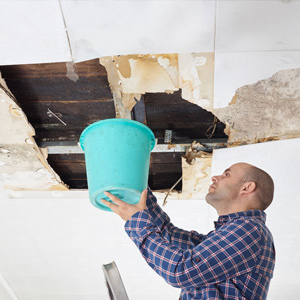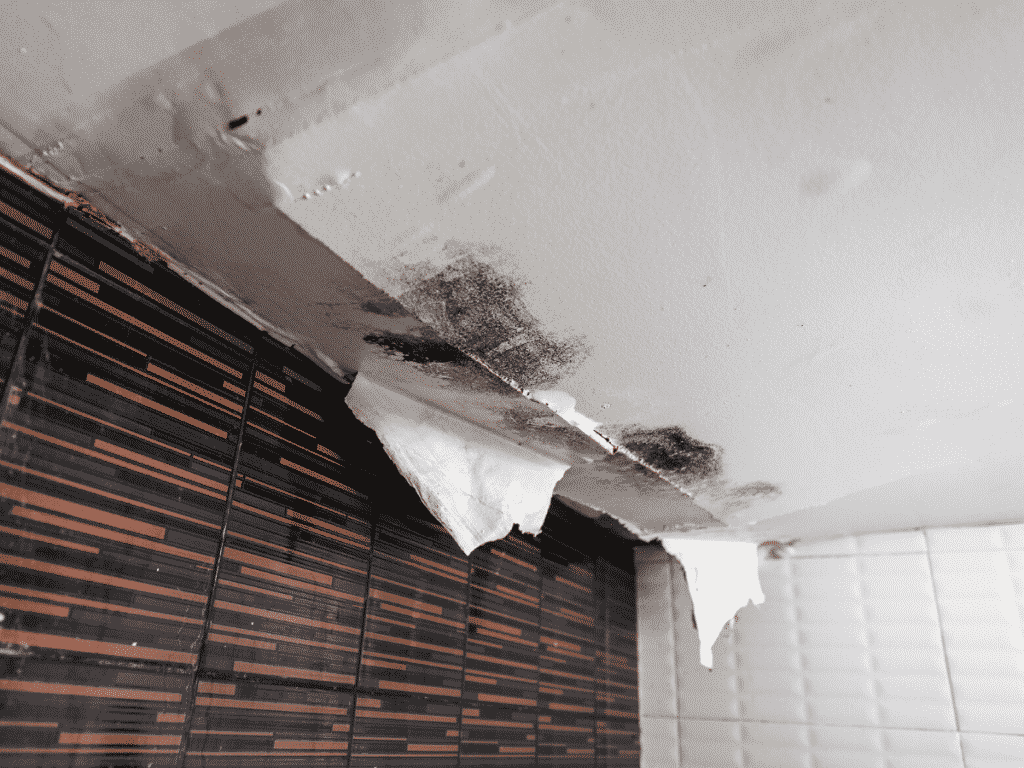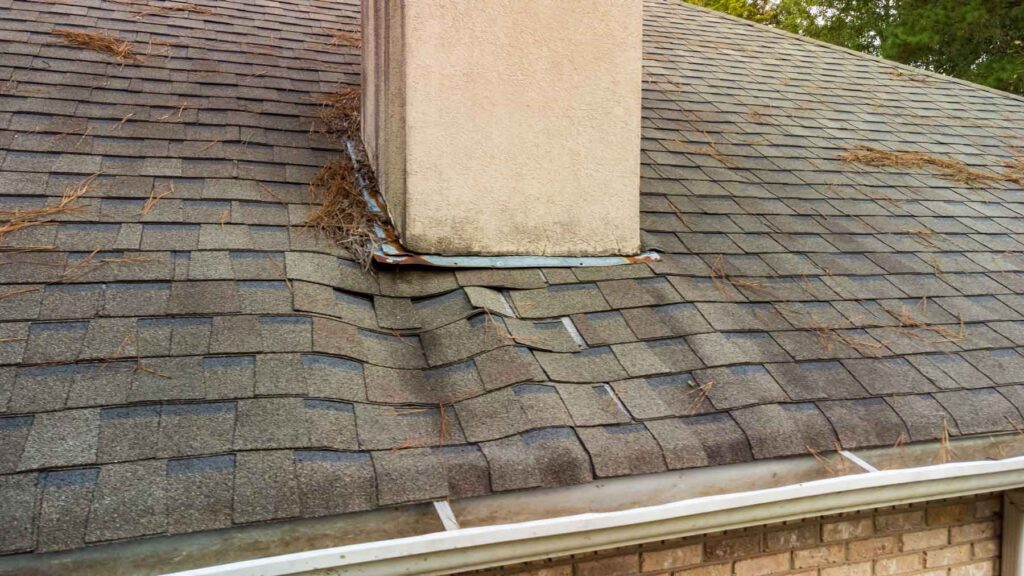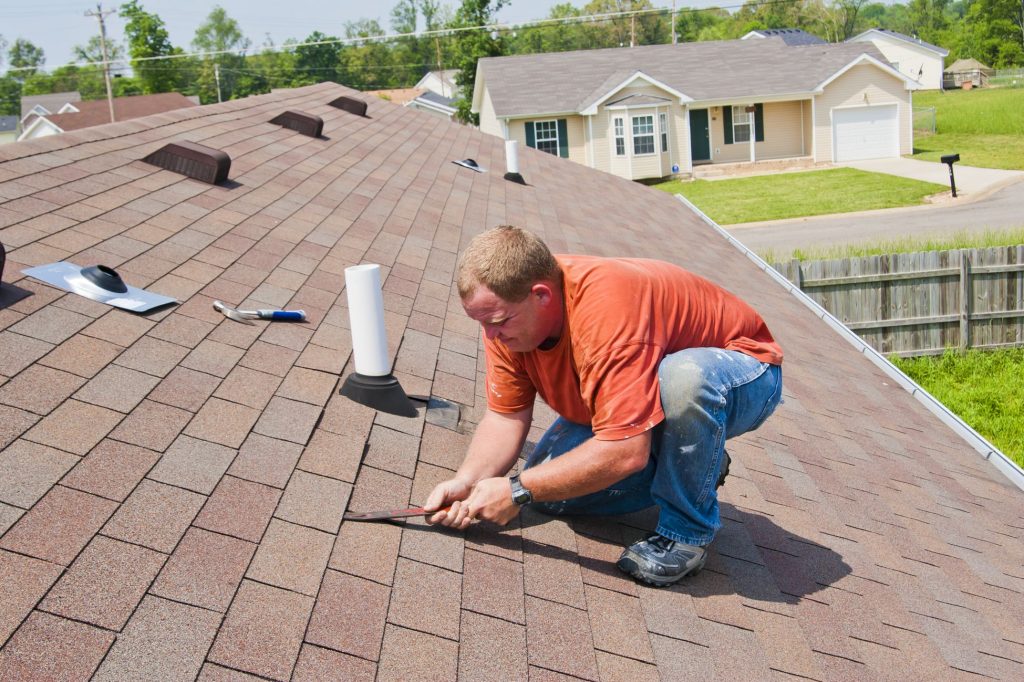Have you ever wondered if it’s possible to fix a roof from the inside? Well, the answer might surprise you. In this article, we will explore the feasibility of patching a roof from the inside, discussing the reasons why you might want to consider this option and the potential benefits it can offer. So if you’re dealing with a leaky roof or in need of some repairs, keep reading to find out if fixing your roof from the inside is a viable solution for you.

Factors to Consider
Roofing Material
When considering patching a roof from the inside, it is important to take into account the type of roofing material you have. Different materials require different patching methods and materials. For example, patching an asphalt shingle roof will be different from patching a metal roof. Understanding the specific requirements for your roofing material will ensure that you choose the right patching method and materials for a successful repair.
Severity of the Damage
Another factor to consider is the severity of the damage to your roof. If the damage is minor, such as a small leak or a small area of missing shingles, it may be possible to patch it from the inside. However, if the damage is extensive, such as widespread leaks or significant structural damage, patching from the inside may not be sufficient. In such cases, it is best to consult a professional for a thorough assessment and appropriate repairs.
Accessibility
Patching a roof from the inside requires access to the affected area. Consider the accessibility of your roof and whether you can safely reach the damaged area from the inside. If the damaged area is located in a hard-to-reach place or requires specialized equipment to access, it may be best to hire a professional with the necessary tools and expertise.
Safety Concerns
Safety should always be a top priority when working on a roof. Patching a roof from the inside may involve working at heights and handling potentially hazardous materials. Assess your comfort level with working at heights and your ability to take necessary safety precautions. If you have any concerns about your safety or lack the proper safety equipment, it is advisable to seek professional assistance.
Budgetary Constraints
Consider your budget when deciding whether to patch your roof from the inside or hire a professional. Patching from the inside can be a cost-effective solution for minor repairs, as it eliminates the need for expensive scaffolding or external repairs. However, if the damage is extensive or the repair requires specialized materials, it may be more cost-effective in the long run to hire a professional who has access to bulk materials and expertise.
Types of Roof Patching
Roof Coating
Roof coating is a popular method for patching roofs from the inside. It involves applying a liquid coating to the damaged area, which forms a protective barrier against water penetration. Roof coatings are typically made of elastomeric materials that can expand and contract with the roof’s movement. They provide a seamless, waterproof barrier that can extend the life of the roof and prevent further damage.
Roof Tape
Roof tape, also known as roof repair tape or roof leak tape, is another option for patching roofs from the inside. It is a self-adhesive, waterproof tape that can be applied directly to the damaged area. Roof tape is often made of rubberized asphalt or butyl rubber, providing excellent durability and adhesion. It is an effective solution for small leaks or punctures in various roofing materials.
Spray Foam
Spray foam is a versatile option for patching roofs from the inside. It consists of two chemical components that, when combined, create an expanding foam that fills and seals gaps and cracks. Spray foam adheres well to most roofing materials and provides excellent insulation and waterproofing properties. It can be applied directly to the damaged area, providing a quick and efficient patching solution.
Sealants and Adhesives
Sealants and adhesives are commonly used for patching roofs from the inside. They come in various forms, including caulk, sealant tubes, and adhesive tapes. These products are designed to seal small gaps, cracks, and seams to prevent water penetration. Sealants and adhesives are often used in conjunction with other patching methods to ensure a watertight seal.
Roof Patching Cement
Roof patching cement, also known as roofing cement or mastic, is a thick, asphalt-based material used for patching roofs. It is typically applied with a trowel or putty knife and forms a durable, waterproof seal. Roof patching cement is commonly used for repairing cracks, gaps, and damaged flashings. It is a versatile option that can be used on a variety of roofing materials.
Process of Patching a Roof from the Inside
Identifying the Leak
Before you can patch a roof from the inside, it is crucial to identify the source of the leak. Look for water stains or wet spots on the ceiling, walls, or attic. Trace the path of the water to locate the damaged area on the roof. Use a flashlight to inspect for any visible signs of damage, such as missing shingles, cracked flashing, or deteriorated roofing material.
Preparing the Area
Once you have identified the damaged area, prepare it for patching. Remove any debris, loose materials, or old sealants from the surface. Ensure that the area is clean and dry before applying the patching material. If necessary, use a brush or scraper to clean the surface and create a smooth, clean base for the patching material.
Applying the Patching Material
Depending on the type of patching material you are using, follow the manufacturer’s instructions for application. Use a trowel, putty knife, or brush to apply the material to the damaged area. Ensure that the material covers the entire damaged area, extending slightly beyond the edges to create a secure seal. Smooth out the material to ensure an even application and proper adhesion.
Allowing for Drying Time
After applying the patching material, allow it to dry according to the manufacturer’s instructions. Drying times can vary depending on the type of patching material and environmental conditions. It is essential to be patient and give the material sufficient time to cure and create a strong, waterproof seal. Avoid any contact with the repaired area during the drying process.
Inspecting and Testing the Repair
Once the patching material has fully dried, inspect the repair to ensure it is effective. Check for any signs of leakage or damage. Use a hose or water source to simulate rainfall and test the repaired area for any water intrusion. If the repair holds up and prevents any water penetration, you can be confident that the patching was successful. If there are any issues, reassess the repair and consult a professional if necessary.
Roof Coating
Types of Roof Coating
There are various types of roof coatings available, including acrylic, silicone, and polyurethane coatings. Acrylic coatings are popular due to their affordability and versatility. Silicone coatings offer excellent weather resistance and UV protection. Polyurethane coatings provide durability and flexibility. Each type has its advantages and is suitable for different roofing materials and environments.
Benefits of Roof Coating
Roof coating offers several benefits, making it an attractive option for patching roofs from the inside. It provides a seamless, waterproof barrier that protects the roof from further damage. Roof coating can extend the lifespan of the roof, improve energy efficiency, and enhance the overall appearance. It is also relatively easy to apply, making it a cost-effective solution for minor repairs.
Application Process
To apply roof coating, start by preparing the surface by cleaning and priming it if required. Use a brush or roller to apply the coating evenly to the damaged area, extending slightly beyond the damaged section to ensure complete coverage. Allow the coating to dry according to the manufacturer’s instructions, and apply additional coats if necessary. Avoid applying the coating in extreme weather conditions or when rain is expected.
Roof Coating Limitations
While roof coating is an effective method for patching roofs from the inside, it does have some limitations. It is best suited for minor repairs and preventive maintenance rather than extensive damage. Roof coating is only suitable for certain roof types, and compatibility with the existing roofing material should be considered. Additionally, roof coating may not be a suitable solution for roofs with significant structural issues or when a complete roof replacement is required.

Roof Tape
Types of Roof Tape
Roof tape is available in different types, including butyl rubber tape, flashing tape, and rubberized asphalt tape. Butyl rubber tape provides excellent adhesion and weather resistance. Flashing tape is designed specifically for sealing roof flashings and joints. Rubberized asphalt tape offers durability and flexibility, making it suitable for various roofing materials.
Advantages of Using Roof Tape
Roof tape offers several advantages for patching roofs from the inside. It is easy to apply, requiring minimal tools and expertise. Roof tape provides a quick, temporary solution for small leaks or punctures. It is also highly adhesive and creates a strong, watertight seal when properly installed. Additionally, roof tape can be used for both temporary and long-term repairs, depending on the severity of the damage.
Installation Process
To install roof tape, clean and dry the damaged area before applying the tape. Cut the tape to the desired length and position it over the damaged section, ensuring complete coverage. Press the tape firmly onto the surface, using a roller or your hand to ensure proper adhesion. Avoid stretching the tape, as this can affect its performance. Trim any excess tape and smooth out any wrinkles or air bubbles.
Limitations of Roof Tape
While roof tape can be an effective option for patching roofs from the inside, it does have limitations. It is best suited for small, temporary repairs and may not provide a permanent solution for extensive damage. Roof tape may not be compatible with all roofing materials or able to withstand extreme weather conditions. Additionally, proper installation is crucial for its effectiveness, and any mistakes during installation can compromise the repair.
Spray Foam
Types of Spray Foam
There are two main types of spray foam used for patching roofs from the inside: open-cell foam and closed-cell foam. Open-cell foam is lightweight and provides excellent insulation properties. Closed-cell foam is denser and offers superior moisture resistance and structural support. The choice between the two types will depend on the specific requirements of the repair and the desired outcome.
Benefits of Using Spray Foam
Spray foam offers several benefits for patching roofs from the inside. It expands to fill gaps and cracks, providing a seamless, airtight seal. Spray foam is highly adhesive and can adhere to a wide range of roofing materials, including metal, concrete, and asphalt. It provides excellent insulation, reducing energy costs and improving indoor comfort. Additionally, spray foam is resistant to water damage, mold, and pests.
Application Process
To apply spray foam, start by preparing the damaged area by cleaning it and removing any loose materials or debris. Shake the spray foam canister thoroughly to ensure proper mixing of the two chemical components. Spray the foam directly onto the damaged area, starting from the center and working outward. Be sure to follow the instructions provided by the manufacturer for proper application techniques and safety precautions.
Considerations for Spray Foam
While spray foam is a versatile option for patching roofs from the inside, there are a few considerations to keep in mind. It requires proper ventilation during application due to the release of potentially harmful fumes. Professional application equipment may be necessary for larger repairs. Additionally, spray foam can expand significantly in size, so it is important to apply it in layers to prevent overexpansion and to ensure proper curing.

Sealants and Adhesives
Types of Sealants and Adhesives
Sealants and adhesives used for patching roofs from the inside come in various forms, such as caulk, sealant tubes, and adhesive tapes. They are typically made of materials like silicone, polyurethane, or asphalt. Each type has its specific properties, such as flexibility, adhesion, and resistance to weathering. The choice of sealant or adhesive will depend on the nature of the repair and the compatibility with the roofing material.
Advantages of Using Sealants and Adhesives
Sealants and adhesives offer several advantages for patching roofs from the inside. They are easy to work with and require minimal tools and expertise. Sealants and adhesives provide a flexible, waterproof seal that can withstand various weather conditions and temperature extremes. They can effectively seal small gaps, cracks, and seams, preventing water penetration and further damage.
Application Process
To apply sealants or adhesives, ensure that the damaged area is clean and dry. Cut the tip of the caulk or sealant tube at a 45-degree angle and insert it into a caulking gun or squeeze tube. Apply a continuous bead of sealant or adhesive along the damaged area, extending slightly beyond the edges. Smooth out the sealant or adhesive using a caulk tool or your finger, ensuring proper adhesion and coverage.
Limitations of Sealants and Adhesives
While sealants and adhesives can be effective for patching roofs from the inside, they have limitations. They are best suited for small repairs and may not provide a permanent solution for extensive or structural damage. Sealants and adhesives may deteriorate over time due to UV exposure or temperature fluctuations, requiring periodic reapplication. Additionally, proper surface preparation and application techniques are crucial for their effectiveness.
Roof Patching Cement
Types of Roof Patching Cement
Roof patching cement is available in various types, including asphalt-based cement, solvent-based cement, and elastomeric cement. Asphalt-based cement is commonly used and provides excellent adhesion and durability. Solvent-based cement is fast-drying and suitable for emergency repairs. Elastomeric cement is flexible and expands and contracts with the roof’s movement, making it ideal for areas prone to movement and temperature fluctuations.
Benefits of Using Roof Patching Cement
Roof patching cement offers several benefits for patching roofs from the inside. It provides a thick, waterproof barrier that seals gaps, cracks, and damaged flashings effectively. Roof patching cement is durable and can withstand weathering and temperature extremes. It is relatively easy to apply, making it a popular option for DIY repairs. Additionally, roof patching cement can be used on various roofing materials, making it versatile.
Application Process
To apply roof patching cement, start by cleaning the damaged area and removing any loose materials or debris. Use a trowel or putty knife to scoop out the cement from the container. Apply a thick layer of the cement to the damaged area, making sure to cover the entire affected section. Smooth out the cement to ensure proper adhesion and a watertight seal. Allow the cement to dry according to the manufacturer’s instructions.
Limitations of Roof Patching Cement
While roof patching cement is a reliable option for patching roofs from the inside, it has limitations. It is best suited for small to medium-sized repairs and may not provide a permanent solution for extensive or structural damage. Roof patching cement may crack or become brittle over time, especially in areas with significant roof movement. It is important to monitor the repaired area and reapply or consider additional repairs if needed.

Common Roof Patching Mistakes
Using Incorrect Materials
One of the most common mistakes when patching a roof from the inside is using incorrect materials. Each roofing material and repair method has specific requirements for patching. Using the wrong materials can lead to ineffective repairs, further damage, or even void warranties. It is crucial to research and understand the proper materials and techniques for your specific roof and repair needs.
Inadequate Surface Preparation
Another common mistake is inadequate surface preparation. Failing to properly clean and prepare the damaged area can prevent proper adhesion of the patching material and compromise the repair. Remove any debris, loose materials, or old sealants before applying the patching material. Ensure that the surface is clean, dry, and smooth to achieve the best results.
Improper Application Techniques
Improper application techniques can also contribute to unsuccessful roof patching. It is important to follow the manufacturer’s instructions for the chosen patching method carefully. Pay attention to proper mixing, application tools, and drying times. Applying too much or too little patching material, not covering the entire damaged area, or failing to create a proper seal can render the repair ineffective.
Not Allowing Adequate Drying Time
Patience is key when patching a roof from the inside. Not allowing the patching material to dry completely can compromise the repair and result in leaks or further damage. Follow the manufacturer’s instructions for drying times and avoid any contact or disturbance of the repaired area during the drying process. Rushing the repair can lead to a temporary fix that will require additional work later on.
Failure to Address Underlying Issues
One of the most crucial mistakes to avoid is failing to address underlying issues. Patching a roof from the inside may temporarily fix a visible problem, but if there are underlying issues, such as poor ventilation, structural damage, or improper installation, the problem will likely persist. It is important to assess the overall condition of the roof and address any underlying issues to ensure a lasting repair.
When to Consult a Professional
Extensive Roof Damage
If the roof damage is extensive, such as multiple leaks, large areas of missing shingles, or structural issues, it is advisable to consult a professional. Professionals have the knowledge, experience, and tools to properly assess and address extensive roof damage. They can provide a thorough inspection and recommend the most appropriate repair or replacement solutions.
Safety Risks
Safety should always be a priority when working on a roof. If patching the roof from the inside involves working at heights or in potentially hazardous conditions, it is best to leave the repairs to professionals. Professionals have the necessary safety equipment and training to work safely at heights and handle hazardous materials. Avoid putting yourself at risk by attempting repairs that are beyond your comfort level.
Lack of Experience or Knowledge
Patching a roof from the inside requires a certain level of experience and knowledge. If you are unsure about the proper techniques, materials, or processes involved, it is advisable to seek professional assistance. Professionals have the expertise and understanding of different roofing systems and materials to ensure a successful repair. It is better to invest in professional help than risk further damage or ineffective repairs.
Warranty and Insurance Considerations
If your roof is still under warranty or covered by insurance, it is important to consider the requirements and terms of these agreements. Some warranties and insurance policies may require specific repair methods, materials, or professional installation. Failing to meet these requirements can void warranties or insurance coverage. Consult the warranty or insurance provider to understand the necessary steps for compliant repairs.
Time and Convenience
Lastly, consider your own time and convenience when deciding whether to patch a roof from the inside or hire a professional. Repairing a roof from the inside can be time-consuming, especially if you are unfamiliar with the process. Hiring a professional can save you time and ensure that the repair is done efficiently and effectively. Evaluate your priorities and schedule to determine the best course of action.
